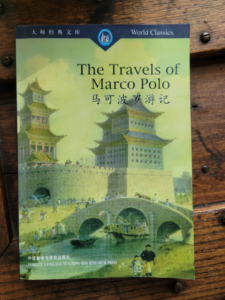 This post is a bit of travel trivia. But first, remember the pool party game called “Marco Polo?” A group of swimmers, usually kids, toss a ball back and forth in a swimming pool (or close to shore at the beach), splash each other a whole lot, and while they do all this they scream Marco Polo (a famous Far East traveller). Why? Why Marco Polo? I have no idea. I recall playing the game—I guess it’s actually water polo—but for the life of me, I don’t remember what the rules were or whether we even had any. All I remember is it was like water-badminton, but rather than lobbing a plastic birdie over a net, we swatted around an inflated, blue/red/yellow striped beach ball. Maybe you never played this game, but if you did, you can tell us about it in the Comments section.
This post is a bit of travel trivia. But first, remember the pool party game called “Marco Polo?” A group of swimmers, usually kids, toss a ball back and forth in a swimming pool (or close to shore at the beach), splash each other a whole lot, and while they do all this they scream Marco Polo (a famous Far East traveller). Why? Why Marco Polo? I have no idea. I recall playing the game—I guess it’s actually water polo—but for the life of me, I don’t remember what the rules were or whether we even had any. All I remember is it was like water-badminton, but rather than lobbing a plastic birdie over a net, we swatted around an inflated, blue/red/yellow striped beach ball. Maybe you never played this game, but if you did, you can tell us about it in the Comments section.
FYI: I spelled traveller that way on purpose. It’s a variant spelling with the double “l.” I just like the way it looks.
I’m reminded of that game with that name because I’m thinking about my travels through the Far East in 2009 with Hoyt, my husband. That was no small adventure, but we had an easy time of it compared with Marco Polo! China was the last country we visited that year on a journey that took us through six countries, including Tibet. We were gone from home almost five months.
Near the end of our odessey, one day in China we visited a bookstore in the tourist-oriented town of YANGSHOU where I found a copy of Marco Polo’s account of his travels through that part of the world. At the time, I planned to write more of my own travel stories, so I thought I’d try to read Marco’s. I felt intimidated by his work, but figured I’d try to wade through it. (I never did finish reading the whole thing.) Inside the copy I bought (an English translation) is not only the main text in English, but an introduction in Chinese. I can’t read Chinese, but I love looking at the characters, so intricate and full of their own stories. (See my 2009 journal entry below and a few pics in the photo gallery.)
More on Marco
Marco Polo became famous for his travel adventures through the Far East, which he accomplished more than 700 years ago. He had some hardships and some fun and bought and/or traded stuff and came home with a lot of mementos: spices, fabrics, you name it—goods made by the people he encountered. And they were from all walks of life and from many different lands and cultures.
By the way, if you’re a writer, be grateful you’re not in the environment he endured while writing his travel stories. From the History Channel: Marco Polo – HISTORY
“Marco Polo (1254-1324) was a Venetian merchant believed to have journeyed across Asia at the height of the Mongol Empire. He first set out at age 17 with his father and uncle, traveling overland along what later became known as the Silk Road. Upon reaching China, Marco Polo entered the court of powerful Mongol ruler Kublai Khan, who dispatched him on trips to help administer the realm. Marco Polo remained abroad for 24 years. Though not the first European to explore China—his father and uncle, among others, had already been there—he became famous for his travels thanks to a popular book he co-authored while languishing in a Genoese prison.”
Who was Marco’s co-author?
Turns out his scribbling prison pal was a man named Rustichello of Pisa who wrote, among other things, adventure stories about King Arthur. My inner writer wonders whether his imaginative influence affected the tone of Marco Polo’s work. Was Rustichello disciplined and only took dictation straight from Marco’s mouth, or did he throw in his own romantic flourishes while at it? We don’t know. But the fact is those two produced a manuscript in 1298 called Description of the World, later known as The Travels of Marco Polo. So, thanks to Rustichello coincidentally being in prison with him—they were captured during a battle between Venetians and soldiers from Genoa—Marco was able to preserve his experiences for posterity—that’s us.
Bit from Marco about Tibet
“The province named Thebeth [nowadays spelled Tibet] was laid entirely waste at the time that Mangu-khan carried his arms into that country. To the distance of twenty days’ journey you see numberless towns and castles in a state of ruin; and in consequence of the want of inhabitants, wild beasts, and especially tigers, have multiplied to such a degree that merchants and other travellers are esposed there to great danger during the night.”
Perhaps if I’d read that BEFORE I went to Tibet, I’d have been too scared to go. As it was, we never saw a tiger and thankfully our hotels kept us safe from such wildness. If you’d like to vicariously visit China and other spots on the Silk Road, Polo’s book is still available. But you don’t have to go to a bookstore in China to find it. Just search for it at your public library or online at any major bookseller.
Bit from my 2009 journal
YANGSHOU
May 19-20, 2009
Ai Yuan Hotel
This tourist-oriented town with its main drag named Western Street is where we met a brave soul running a Western bookstore with novels and non-fiction books in English, German, French, and Dutch. He said it had taken him a long time to build up inventory because the Communist government “controls information” so closely. But because tourists trade, sell, and buy books in his shop, the government looks the other way. It’s not for locals. This is a tourist draw and you gotta keep those tourists happy and spending their money, he said! Lucky for us, we found his shop by stopping in an ex-pat services office and asking where to buy some reading material. They cheerfully gave directions and sure enough we found a few good books there. For me: Alice Walker’s The Temple of My Familiar (read on the plane home), The Travels of Marco Polo published by the Foreign Language Teaching and Research Press in Beijing, and for Hoyt, The Camel Club by Baldacci and White Death by Clive Cusstler. So that bookstore visit made our day! And when I think about that shop owner, I’ll ever be thankful for the mostly no-censorship policy here in the U.S.
_______________________
Next time on this blog: A Look at Libraries
Thanks for reading!
Your writer on the wing,
Charlene

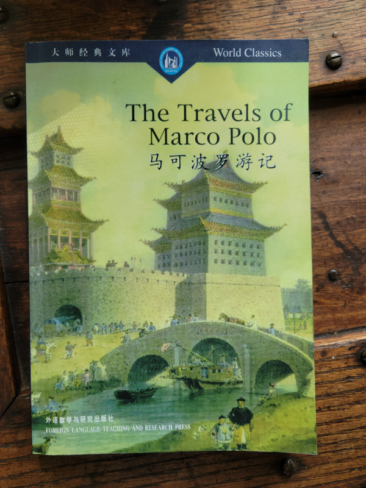


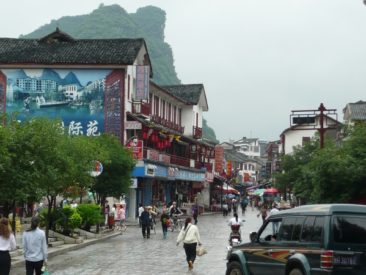


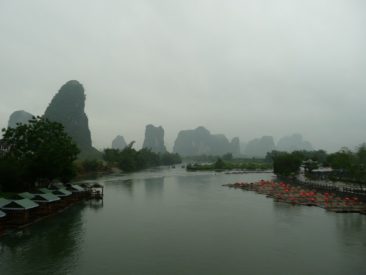
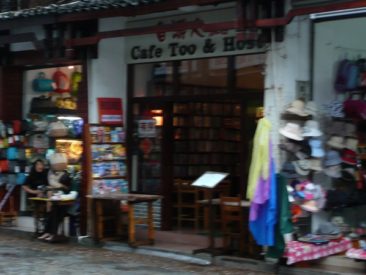

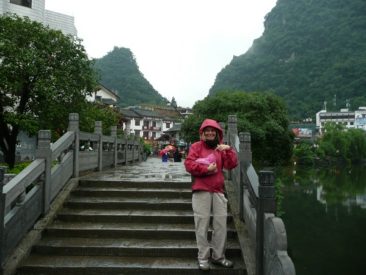
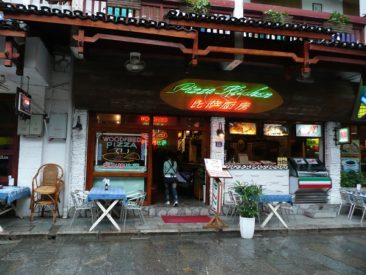










Candy Dawson
What a lovely and fun post. And my goodness, what enchanting Travels of Charlene and Hoyt in 2009. Thank you for sharing. The version of Marco!…Polo! we played and watch kids play in pools goes like this: One child has eyes closed and the other moves around shouting MARCO while trying to avoid being found/touched when the eyes-closed friend hones in and shouts POLO. Such silly, innocent fun for those playing even if unnerving for adults possibly trying to read or relax. Sounds of Summer for sure.
Charlene Edge
Thanks for reading, Candy. Your description brings back a clearer memory of the game, for sure. Marco and Polo were like answers to each other, weren’t they? Such fun, indeed, but, as you say, probably annoying to nearby sunbathers and readers. My family joined The Elks Club in Salisbury where I grew up, so dad played golf there, and I swam in the pool. Still love to swim!
Kathleen Brandt
A fun post for sure. I remember playing Marco Polo all the time in summer in the pool… something about throwing a ball at each other but I don’t remember what. As Candy said, it had something to do with closed eyes and finding each other by the sound of yelling ‘Marco’ and ‘Polo’ at each other! There’s a funny Modern Family episode where the Dunphys play it in a hotel pool.
Charlene, you have been to some amazing places! Thanks for sharing.